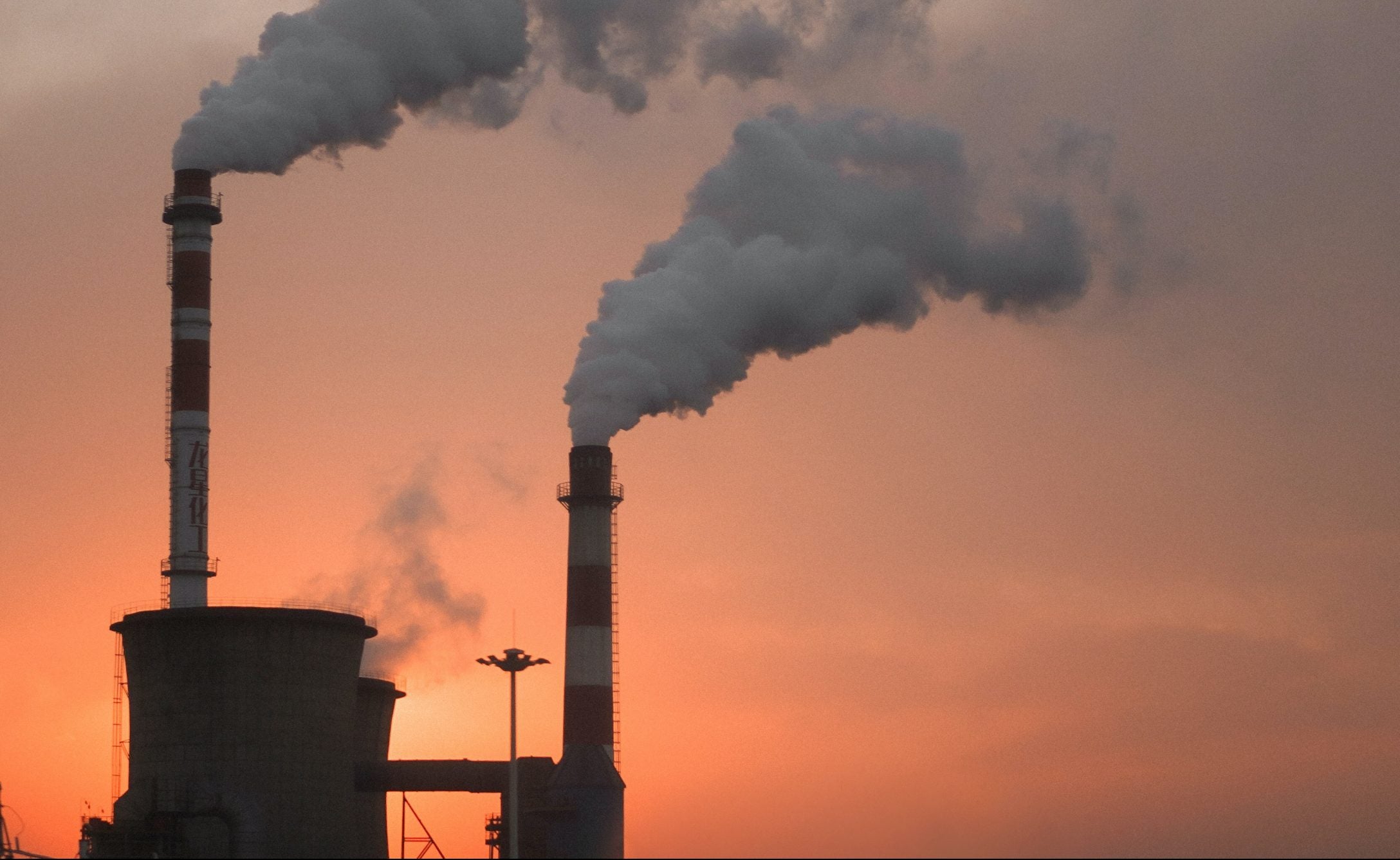The Biden Administration’s American Jobs Plan and American Families Plan propose over $4.1 trillion in new government spending over the next 10 years, aiming to fundamentally reshape and expand the social safety net, increase the economy’s productive potential through investments in physical and human capital, and make major public investments in green infrastructure and technology.
The Aspen Economic Strategy Group (AESG) has produced a number of reports in recent years that speak directly to the policy challenges addressed in these plans. We highlight 13 directly relevant AESG reports below. Some of the proposals contained in the administration’s plans are consistent with the evidence and suggestions of AESG authors; some are not.
Climate
“The President is calling on Congress to invest $35 billion in the full range of solutions needed to achieve technology breakthroughs that address the climate crisis and position America as the global leader in clean energy technology and clean energy jobs.”
“[President Biden’s plan] targets investments to support infrastructure in those communities most vulnerable physically and financially to climate-driven disasters and to build back above existing codes and standards.”
-American Jobs Plan Fact Sheet, 2021
The Biden plan recognizes the need for climate change reduction, mitigation, and adaptation policies. More than 100 countries have already pledged to achieve net-zero emissions within the next 30 years. While emissions reduction is a necessary step, AESG authors have argued that it is only one component of the four-pronged approach that’s needed to address climate change.
- In their 2020 report, David Keith and John Deutch highlight the potential and necessity of technological breakthroughs to reduce carbon emissions and mitigate the effects of climate change. They observe that four “climate control mechanisms” have the capacity to create a politically stable and economically sound climate policy: (1) emissions reduction; (2) carbon dioxide removal; (3) adaptation; and (4) solar radiation modification. Embracing all four approaches will require a robust, multiyear R&D program and adoption of a stable greenhouse gas emission charge. The authors also recommend changes to climate governance in the United States, including the creation of a single, joint congressional committee to oversee all climate policy.
Biden’s American Jobs Plan acknowledges that climate challenges disproportionately affect disadvantaged communities in the U.S. and around the world, noting that “… people of color and low-income people are more likely to live in areas most vulnerable to flooding and other climate change-related weather events.”
- Trevor Houser’s 2020 AESG report documents the unequal distribution of climate-related damages, drawing on recent econometric research and climate models to project geographical changes in climate patterns. He underscores the varying impact of warming on social and economic outcomes and highlights the need for adaptation policies, such as preparing for climate displacement and promoting infrastructure resilience.
The Biden plans offer several strategies to pay for increased spending. However, a carbon tax, which could raise substantial revenues while also correcting market failures, is notably absent.
- In his 2020 report, Gilbert Metcalf argues that a pledge to net-zero emissions is infeasible without putting a price on carbon. He also addresses common political concerns about adopting such a tax, including potential impacts on American international competitiveness, distributional consequences, and the potential for job displacement. He demonstrates that a border tax adjustment would ameliorate concerns about the tax’s impact on competitiveness, while revenues can be redistributed in such a way to address distributional concerns. He also shows that such a tax can be designed to change the composition of jobs in the economy without reducing the total quantity of jobs.
Human Capital Investments
“President Biden is calling for … $109 billion for two years of free community college so that every student has the ability to obtain a degree or certificate. In addition, he is calling for an over $80 billion investment in Pell Grants, which would help students seeking a certificate or a two- or four-year degree. Recognizing that access to postsecondary education is not enough, the American Families Plan includes $62 billion to invest in evidence-based strategies to strengthen completion and retention rates at community colleges and institutions that serve students from our most disadvantaged communities.”
-American Families Plan Fact Sheet, 2021
“President Biden is calling on Congress to invest $12 billion to … invest in community college facilities and technology… [The President is also] calling on Congress to invest a combined $48 billion in American workforce development infrastructure and worker protection. This includes registered apprenticeships and pre-apprenticeships, creating one to two million new registered apprenticeships slots.”
-American Jobs Plan Fact Sheet, 2021
The Families Plan calls for enhanced funding to higher education institutions to invest in evidence-based strategies to strengthen completion and retention rates at community colleges and institutions that serve students from our most disadvantaged communities.
- A 2019 AESG report by Amy Ganz, Austan Goolsbee, Glenn Hubbard, and Melissa Kearney highlights the critical role of community colleges in the U.S. higher education landscape. Community colleges serve millions of students each year, disproportionately minority and low-income students. However, completion rates at community colleges are low. Their proposal calls for increased funding (on the order of $20 billion) to community colleges contingent on improved institutional outcomes. The report highlights evidence showing that enhanced student support improves retention and completion outcomes.
- A 2019 report by AESG author Robert Lerman emphasizes the promise of work-based learning programs as a means to skill development. Lerman argues that a large-scale apprenticeship program could address stagnant wages and waning career prospects for non-college educated workers, while also providing additional gains for employers and for the U.S. economy.
Investments in Innovation and R&D
“U.S. leadership in new technologies–from artificial intelligence to biotechnology to computing–is critical to both our future economic competitiveness and our national security. President Biden is calling on Congress to invest $50 billion in the National Science Foundation (NSF), … provide $30 billion in additional funding for R&D that spurs innovation and job creation, … [and] invest $40 billion in upgrading research infrastructure in laboratories across the country.”
-American Jobs Plan Fact Sheet, 2021
U.S. federal funding of R&D has substantially declined since the early 1960s. The Jobs Plan calls for increased federal funding of R&D and innovation research.
- In a 2019 AESG report, John Van Reenen highlights the significance of the decline in federally funded R&D, showing that it has coincided with lackluster productivity and wage growth for several decades. To combat these challenges and spur technological progress, Van Reenen recommends three groups of innovation policies: tax credits, direct subsidies, and human capital investments.
- AESG author Chad Syverson makes the case for broad government investment policies, rather than subsidizing specific industries, to spur innovation and productivity growth. Syverson argues that a multifaceted approach to addressing negative productivity patterns is most sensible. He recommends adopting policies aimed at targeting infrastructure investment, improving managerial practices, increasing product market competition, and reducing input frictions in markets.
Place-Based Policy
“For decades, exclusionary zoning laws–like minimum lot sizes, mandatory parking requirements, and prohibitions on multifamily housing–have inflated housing and construction costs and locked families out of areas with more opportunities. President Biden is calling on Congress to enact an innovative, new competitive grant program that awards flexible and attractive funding to jurisdictions that take concrete steps to eliminate such needless barriers to producing affordable housing.”
“President Biden is calling on Congress to invest $31 billion in programs that give small businesses access to credit, venture capital, and R&D dollars.”
“President Biden’s plan will turn idle rural and urban property into new hubs of economic growth and job creation [and] bring these communities new critical physical, social, and civic infrastructure. … The President’s plan prioritizes building “future proof” broadband infrastructure in unserved and underserved areas so that we finally reach 100 percent high-speed broadband coverage.”
-American Jobs Plan Fact Sheet, 2021
There is ample evidence of persistent divergence in economic outcomes across U.S. localities. The Jobs Plan recognizes the need for investments in economically depressed localities. It also recognizes that barriers to geographic mobility, including land use restrictions that drive up housing prices in high-productivity areas, impede the ability of people to move to places where they would encounter better economic opportunities. Such barriers ultimately decrease overall employment, productivity, and earnings.
- In a 2019 AESG report, Joshua Gottlieb estimates U.S. GDP and wages are $2 trillion and $1.3 trillion below their potential, respectively, as a result of restrictive land use policies. To address these challenges, Gottlieb proposes the adoption of state-level Minimum Zoning Mandates (MZMs) that would allow landowners to build at a state-guaranteed minimum density. He argues that such MZMs would not only improve housing affordability, but also spread economic opportunity more broadly and limit the environmental impact of new development. The American Jobs Plan highlights the problem of exclusionary zoning and calls for a federal competitive grant program that rewards jurisdictions that relax unnecessary barriers. This approach likely reflects constitutional limits of federal legislators to directly restrict local zoning regulations. However, as Gottlieb highlights, state-level policies may provide another promising avenue for reducing such restrictions.
- James Ziliak’s 2019 AESG report also discusses the barriers to increased economic opportunity in rural labor markets, highlighting the large urban-rural divide in U.S. employment and wage rates. He proposes a two-fold strategy of bringing “people to jobs” through policies such as relocation assistance payments and short-term credit for commuting expenses, and “jobs to people” by way of recurring loans and grants for small businesses and the creation of a federal jobs program. The Biden plan emphasizes the latter approach, with investments dedicated to increasing local innovation, supporting domestic manufacturers, and expanding access to broadband services, although it does not include a federal jobs program. Ziliak also underscores the importance of rural broadband access, noting that expanded telework both increases access to stable jobs and decreases congestion in high-density urban areas.
- In a 2020 AESG report, Timothy Bartik argues that large and persistent differences in employment rates across U.S. places highlight the need for local economic development policies to better promote cost-effective job creation in distressed areas. The vast majority of funding spent by state and local governments each year—roughly $47 billion—is allocated to tax breaks and financial incentives for specific firms. Bartik recommends state-level policy reforms to direct resources to the most distressed areas, where the initial rate of employment is low. Bartik also recommends “export-based industry targeting,” which aims to promote local growth beyond the specific industries they target to create a multiplier effect in the local economy and avoid drawing business away from other local firms. Additionally, he highlights two potential federal interventions: capping the size of tax or other large discretionary incentives awarded by state or local governments; and a new federal block-grant program for local economic development that would be awarded to local labor markets that are 5 percentage points or more below the U.S. average in prime-age employment rates.
Inequality and the Middle Class
“President Biden is committed to strengthening and reforming the system for the long term. … [He] wants to work with Congress to automatically adjust the length and amount of UI benefits unemployed workers receive depending on economic conditions.”
“President Biden’s plan uses the resulting revenue to rebuild the middle class, investing in education and boosting wages. It will also give tax relief to middle-class families, dramatically reducing child poverty and cutting the cost of child care in half for many families.”
“Make the Earned Income Tax Credit Expansion for childless workers permanent.”
-American Families Plan Fact Sheet, 2021
Rebuilding the American middle class is a central theme of the Biden Administration’s Families Plan. Proposals such as free community college, an expanded EITC for childless workers, and new childcare benefits would increase redistribution to the middle class. When combined with the administration’s pledge to not raise taxes on families with annual incomes below $400,000, the plan would increase benefits without raising revenues from many middle-income families.
- Despite prevailing political narratives, a 2020 AESG report from Adam Looney, Jeff Larrimore, and David Splinter shows that government tax and transfer policies have increasingly benefited the middle class since the 1970s. Their analysis also raises the question of whether future federal tax and transfer policies can continue to boost middle-class income without also increasing tax revenue from the middle class.
- In a 2018 AESG memo, Jason Furman and Phill Swagel weigh the pros and cons of two alternative policy approaches that aim to promote increased earnings for the lower and middle quintiles: (1) tripling the EITC among childless workers (based on 2017 levels); and (2) implementing a wage subsidy for low-income workers that would be administered through employers. The wage subsidy would be delivered through employers of low-income workers and would be based on hourly wages rather than annual household income. Another important difference is that the benefits to workers would be in the form of wage compensation which would require no filing or other administrative effort by workers. However, the implementation of a wage subsidy would need to be administered through state unemployment insurance (UI) systems, creating an administrative burden for states and employers.
The Covid-19 pandemic underscored the importance of the federal safety net for providing support for the unemployed, underemployed, and most vulnerable. However the pandemic also exposed weaknesses and gaps in the safety net, as program benefit amounts and payments were poorly timed with economic conditions. In response, the American Families Plan proposes implementing automatic adjustments to the length and amount of UI benefits depending on economic conditions.
- AESG members Jason Furman, Timothy Geithner, Glenn Hubbard, and Melissa Kearney suggest reforming the UI system by automatically phasing in and out benefits based on economic circumstances, employing automatic triggers for UI extended benefits, along with bolstering short-time compensation benefits.
Photo Credit: Unsplash – Euan Cameron


















